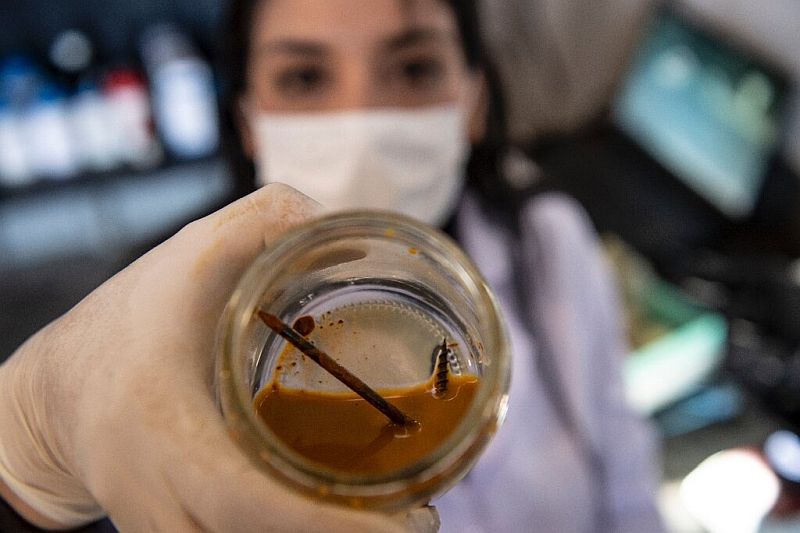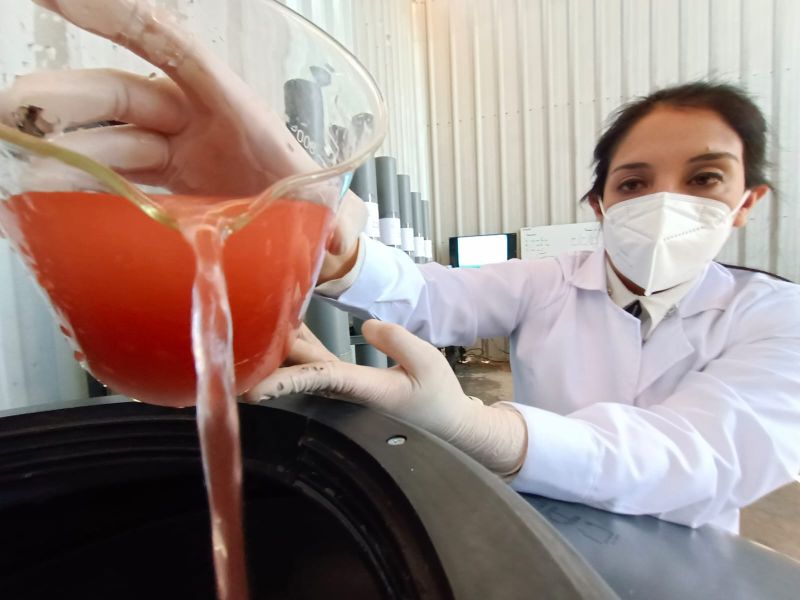
A starving being can eat everything and anything and within minutes. While in the character of 19th-century trapper, Leonardo DiCaprio, a starving man in The Revenant eats raw bison liver. Survival instinct is what keeps the living beings away from extinction coz of hunger and this can be seen in microorganisms as well.
In Chile, a scientist fed a particular type microorganism on metal and discovered that they managed to “eat” a nail in just three days. There are microorganisms that survive in extreme environments and consume inorganic stuff like metals.
Metal eating bacteria
In her lab, biotechnologist Nadac Reales tested this phenomenon with extremophiles – the organisms that live in harsh environments. She envisions that her study would help tackling metallic waste in mining industry.
All metals cannot be recycled, for instance, 50-ton capacity HGV truck hoppers. The only place to discard HGV truck hoppers in Chile is Atacama Desert. The 1,600 km desert plateau in South America also happens to be the place for country’s mining industry.
Chile is the world’s largest producer and exporter of copper. Cu also plays an important role in the Chilean economy. It contributes nearly 15% the country’s GDP. Mining copper, however, leads to environmental population.
Leptospirillum bacteria from the Tatio geysers
In her research, Reales, extracted Leptospirillum bacteria from the Tatio geysers around 350 kilometers from Antofagasta, northern Chile. She preferred the geothermal field because the microbial precipitates in acidic springs and geysers.
Generally, these extremophiles take nearly two months to disintegrate a nail. For the experiment, she introduced a nail to starved bacteria.
After two years of research, the study confirmed that there was an increase in the speed at which the bacteria devour the nail. The run time from two months came down to 3 days.

Green mining with lixiviant
After the disintegration, the leftover of metals consists of a reddish liquid residue called lixiviant. The liquid medium has a surprising quality, that is, can improve the recovery of copper via hydrometallurgy – a technique for obtaining metals from their ores.
Generally, copper is extracted from rock with the help of leaching, which makes use of chemicals. Lixiviant, however, can extract the same in a more sustainable fashion. In Reales words, green mining is “totally feasible.”
Takeaway
Reales said not only the bacteria can eat metal efficiently, the chemical and microbiological tests have proved that these microorganisms are also safe to humans and environment.
Drina Vejar, from the team added that their project has a lot of potential in the real world as it has passed through the rigorous tests in the lab.
The metal eating bacteria looks promising towards sustainable development since more and more cities across the globe have numerous polluting industries. With the help of green mining, large scale extraction of copper and other minerals will be performed with less waste in terms of pollution.
Via: Rudanac Biotec



